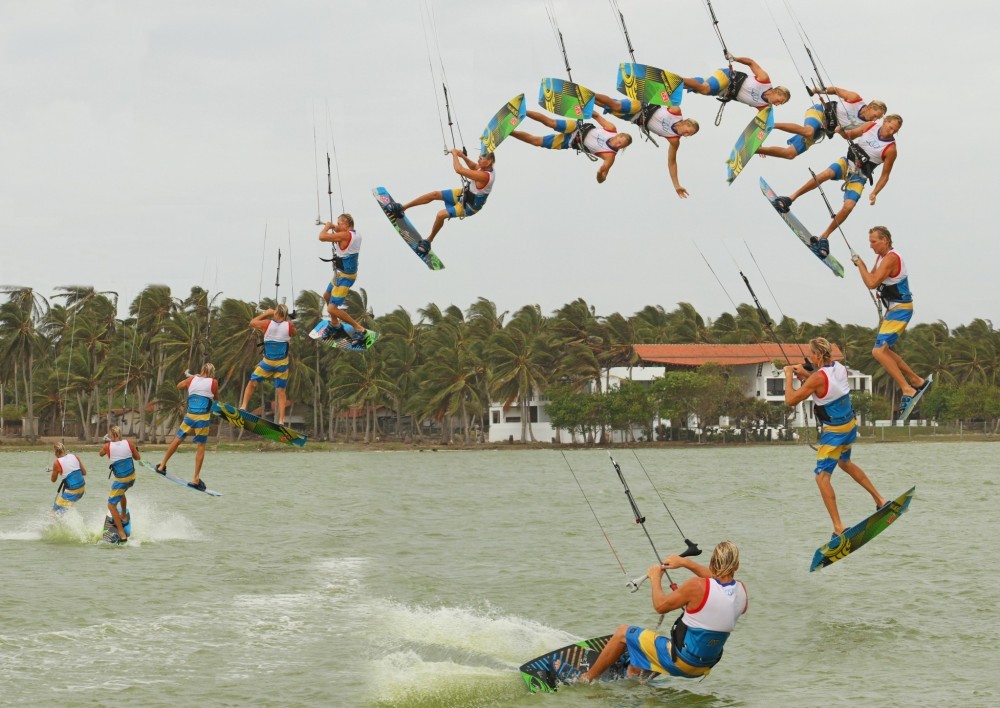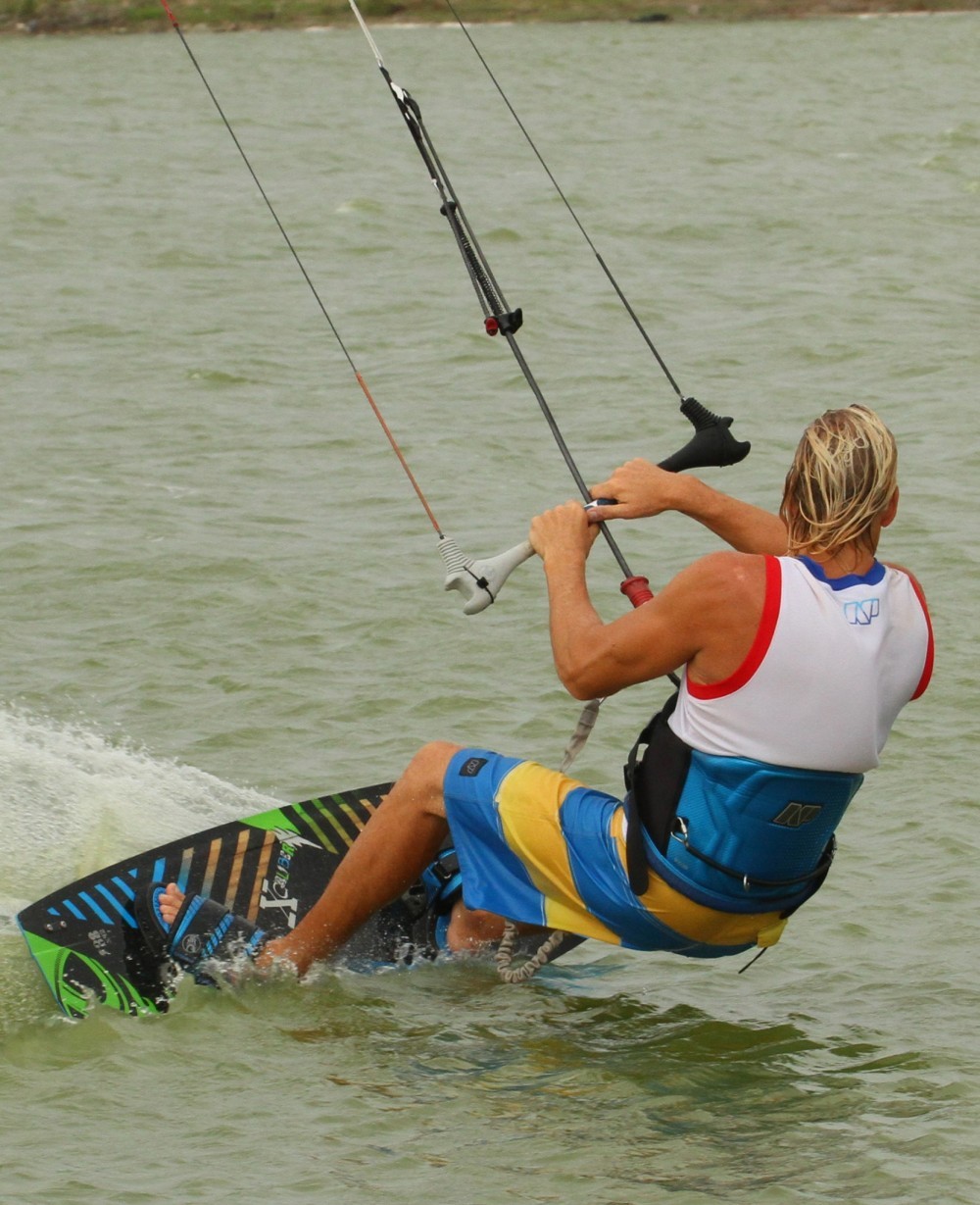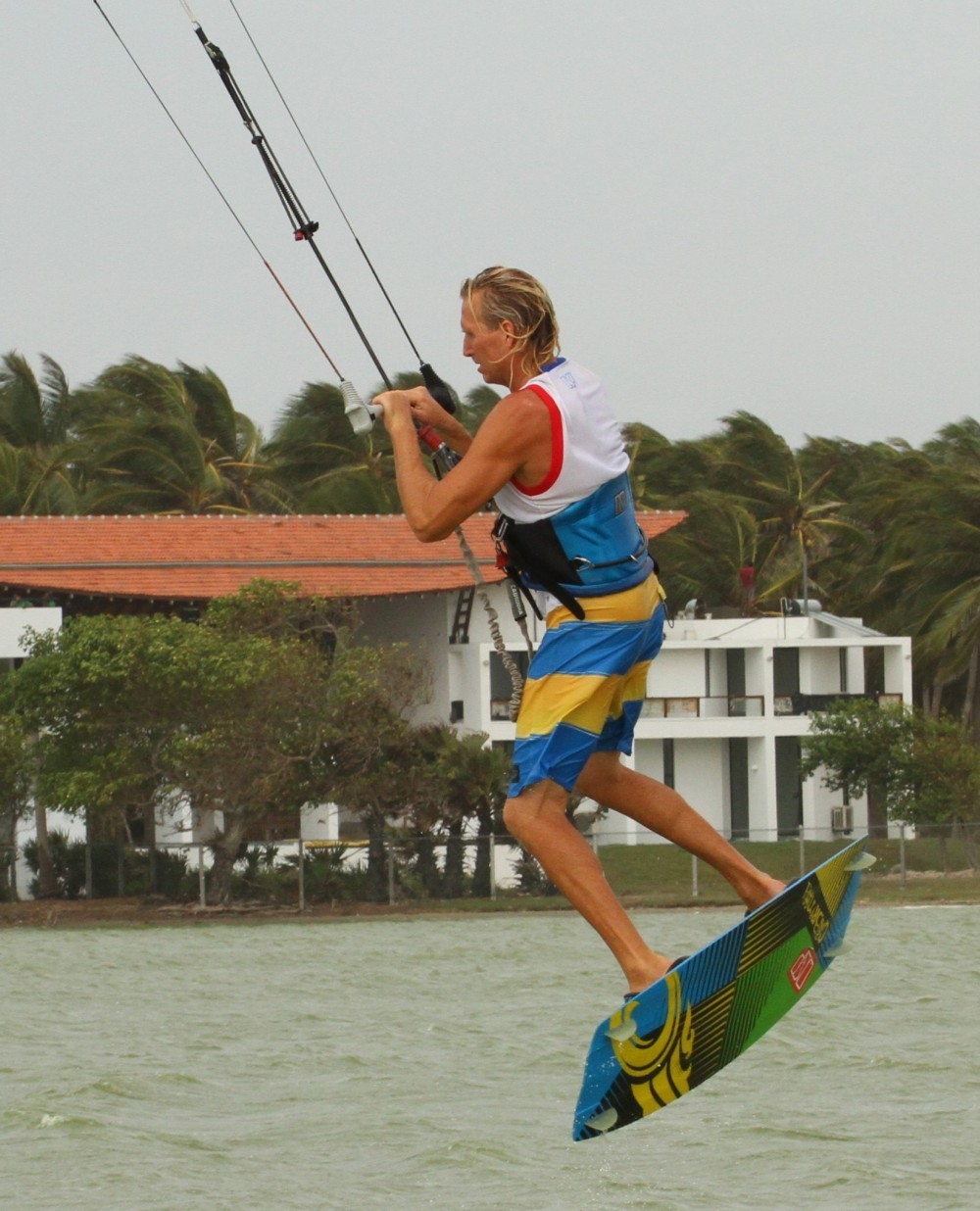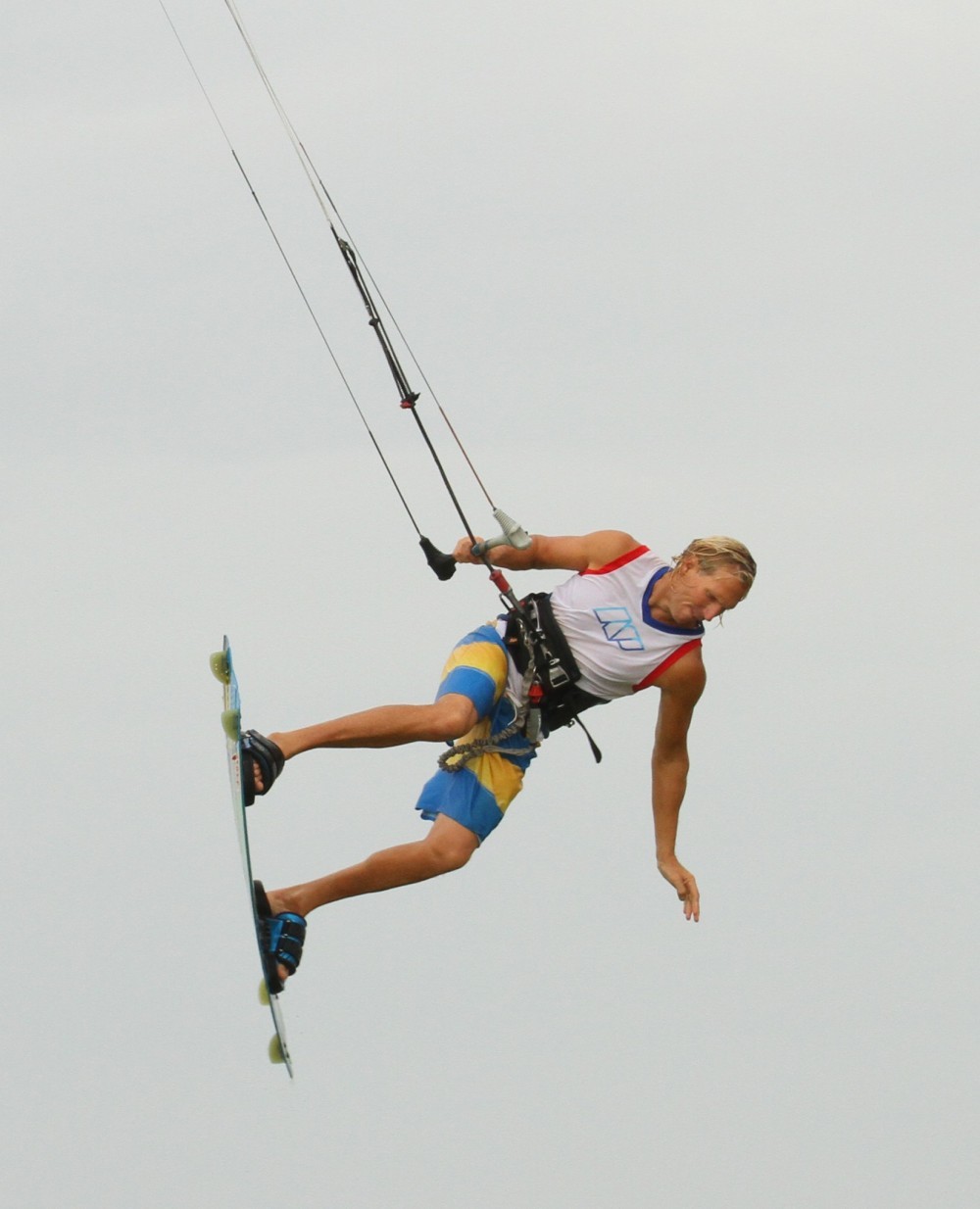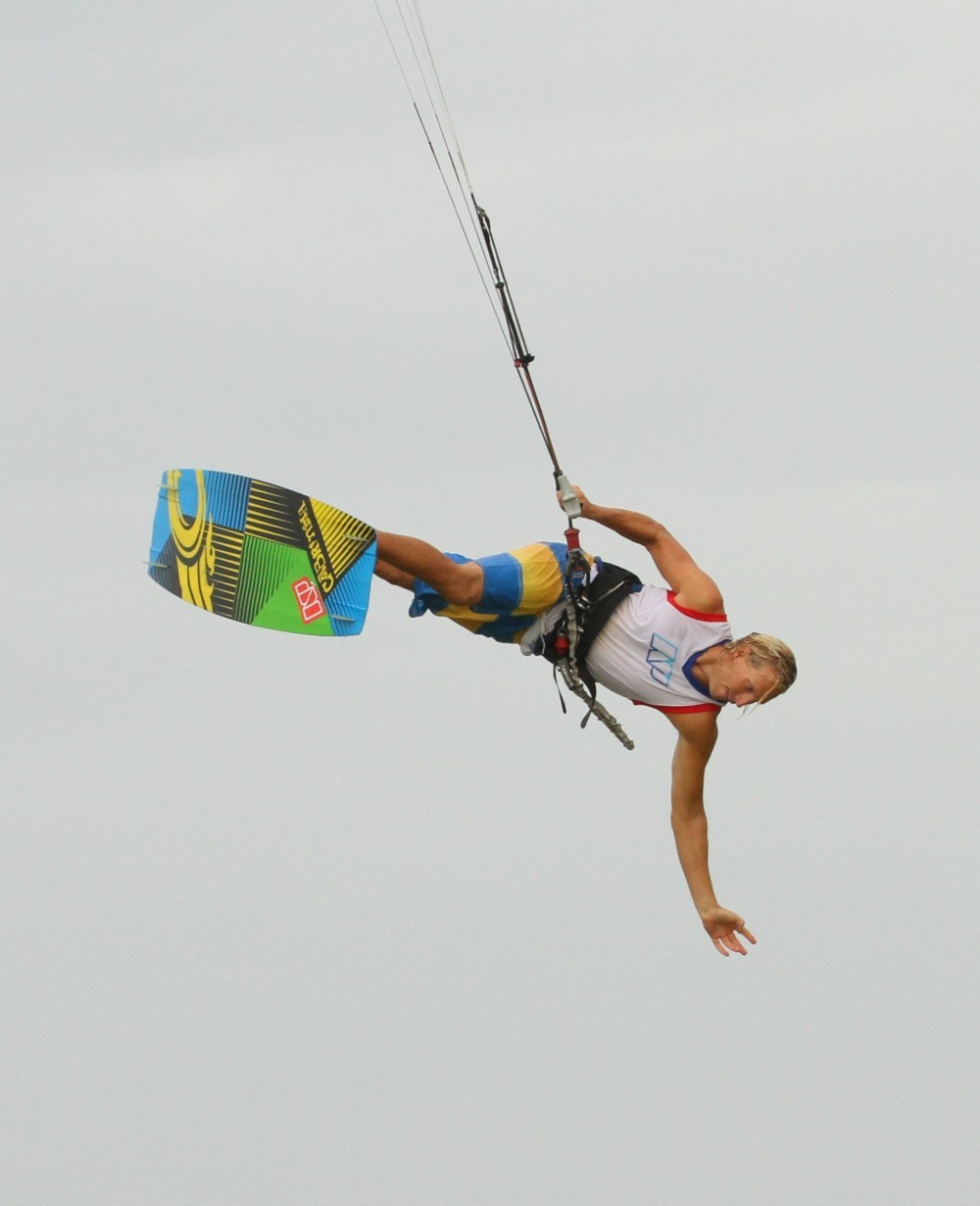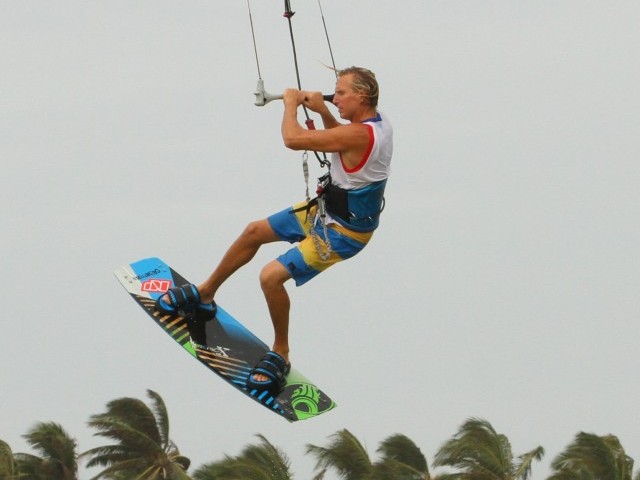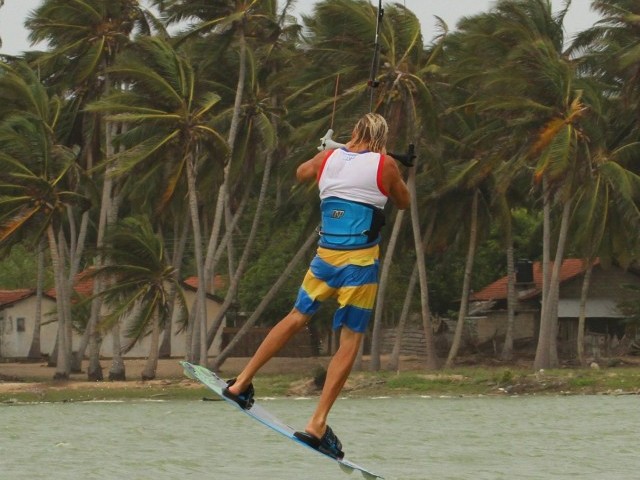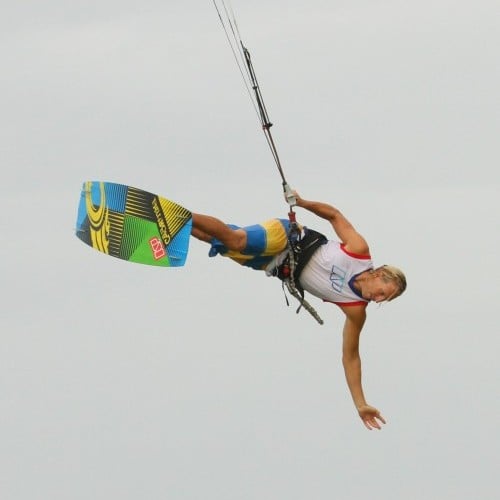
One Handed Tabletop
Technique / Intermediate
Introduction
It is often surprising that when the wind picks up and the only option is to literally go up with it, that many a kiter’s bag of tricks diminishes. For this reason expanding your air game is a must, so that when the wind calls, as it so often does when you’ve set your heart on unhooking or that cheeky dark slide, you can still have an array of moves to impress your peers and more importantly keep yourself entertained. The table top comes very much from windsurfing and was championed in kiting by many of the early adopters, we’ve all seen Robby tweaked and upside down. Without a long nose on the board (or a mast foot) the twin tip variation has a different look, is jolly good fun and achievable for anybody willing to give it a crack. All you really need is to be happy with a grabbed jump, if you can ride blind you’ll have the movement already!!
If you’re not sure what a tabletop should look like have a quick look at the Sequence and the Video. In it’s simplest form this move requires you to take your back hand off the bar and throw it behind you whilst twisting your body and scissoring your legs. The more you invert the more likely that your board will be upside down and that is when you have a purist’s table top. However on a twin tip we reckon not inverting too much looks better, but whatever rocks your boat. So let us proceed.
The Foundation
Your prospective table top won’t be much if you don’t give it the legs (sorry) on take off. You will be hanging slightly off your front hand as you swing yourself into this and therefore your jump needs to be more send than bow. You can see that Christian has given the kite a good send by the angle of his bar. The push and pull action here is important as you’ll have your hands very centred so that you don’t make any rash moves once you’re up, but this does mean that your hands have less impact when you send the kite back. You need a decent send to give you the height and get you flying with the kite behind 12. If you don’t send it past 12 and just pull in for lift you will redirect the kite too much once you go for the table top. How far back you go will depend on kite size and wind strength, nothing too extreme as you still want float. Needless to say Christian has a good edge coming into this and he is looking upwind not at the kite.
Get Settled
Once you do take off make sure you’re balanced, settled and that the kite is where you want it, just behind 12 o’clock. There is no great rush as you won’t be able to hold the one handed position indefinitely. As Christian launches himself skywards he brings the bar in to make sure that he’s got tension on the lines for float, and this also lets him feel if the kite is supporting him and from where – you’ll feel the kite pulling from anywhere but up if it’s in the wrong place! By pulling the bar in with two hands it guarantees that the kite won’t move much as you release and swing into the move.
The Moment of Truth
Now that you’re comfy it’s time to go. Christian has released his back hand, swung his arm back and turned his head to look down at the water behind him. This action will swing you around so that along with your head, your body and legs will turn too. Looking down allows your shoulders to drop, which will lift the board a little. The movement itself is fairly simple, almost like throwing a blind in the air. However do take note of the fact that Christian has kept the bar in close to his hip with his front hand. This keeps the kite sheeted in and more importantly keeps you in the air – don’t be tempted to extend your front arm as you extend and swing your back arm.
Tweak It
Once you’re happy with the initial swing and twist you can tweak yourself into a more extended position, the canvas is now yours. Christian has reached down with his free arm to lift the board further, and pushed the board up and away from him by extending his legs. The trick is now trying to hold it, fighting gravity whilst keeping the bar in. The two simplest variations of this are to invert more by throwing your head back as you turn and to pull your back leg into your bum, keeping the front boned for a more classic position.
The Return
You will find that the weight of your board will get the better of you and the board will start to swing back around. As soon as it does make an effort to get your back hand back on the bar as this will help you control the rest of your flight, and as Christian is doing in the picture, try to lift you knees to reduce the pendulum effect of your board.
Swinging Down
This is quite likely to happen if you do get a bit of tweak to your table top, so be ready. As Christian’s legs and board have swung down they’ve created a fair bit of inertia, and so on they go, swinging him merrily so that his front foot turns upwind. If you’re happy to land toe side then there is no problem, but if you had good height and would prefer to dive the kite hard for a soft landing try to keep your head and shoulders facing forward, core tight and dive the kite hard as per usual. As the kite pulls it will help you turn the board back downwind and land as you normally would.
Top Tips
As we often suggest, a few incremental steps along the way to your goal will make it easier, so on your first few attempts just go for a little look back and down whilst keeping two hands on the bar. Then move on and release your back hand, and finally when you’re feeling confident give it the swing and let your body and legs twist.
Keeping your front hand held in tight against your hip is a must. This will enable you to twist back around at any time as you’re locked to the bar.
Make sure that your front hand is butted up against the centre line in the middle of the bar.
Now have a good gander at the Sequence and Videos before you take this out on the water.
Common Problems
Your main obstacles will come from the kite and the swinging through on landing.
As with all one handed moves you are at risk of moving the kite when you least want to, so if you do find that it’s flying forward and pulling you off balance into a front foot heavy landing or a splash, make sure that it is behind 12 o’clock before you take your back hand off.
Also make sure that you are swinging yourself into the table top and not pulling yourself into it with the front hand. Having that hand locked in and stationary is very different from pulling against it to move your body weight.
If you’re struggling with the landing as your legs swing through chances are you’re not diving the kite hard enough to help get you back to a downwind landing position. This is a leap of faith but just as when you learnt to jump, the pull from the kite for landing does and will help.
Keystones
- Send kite past 12 o’clock.
- Balanced with bar in on way up.
- Release back hand.
- Swing arm and look down.
- Keep front arm locked in.
This technique article was in Issue 46 of IKSURFMAG.
Related
By Christian and Karine
Christian and Karine have been working together as a coaching team, running improver to advanced kitesurfing clinics since 2003.






